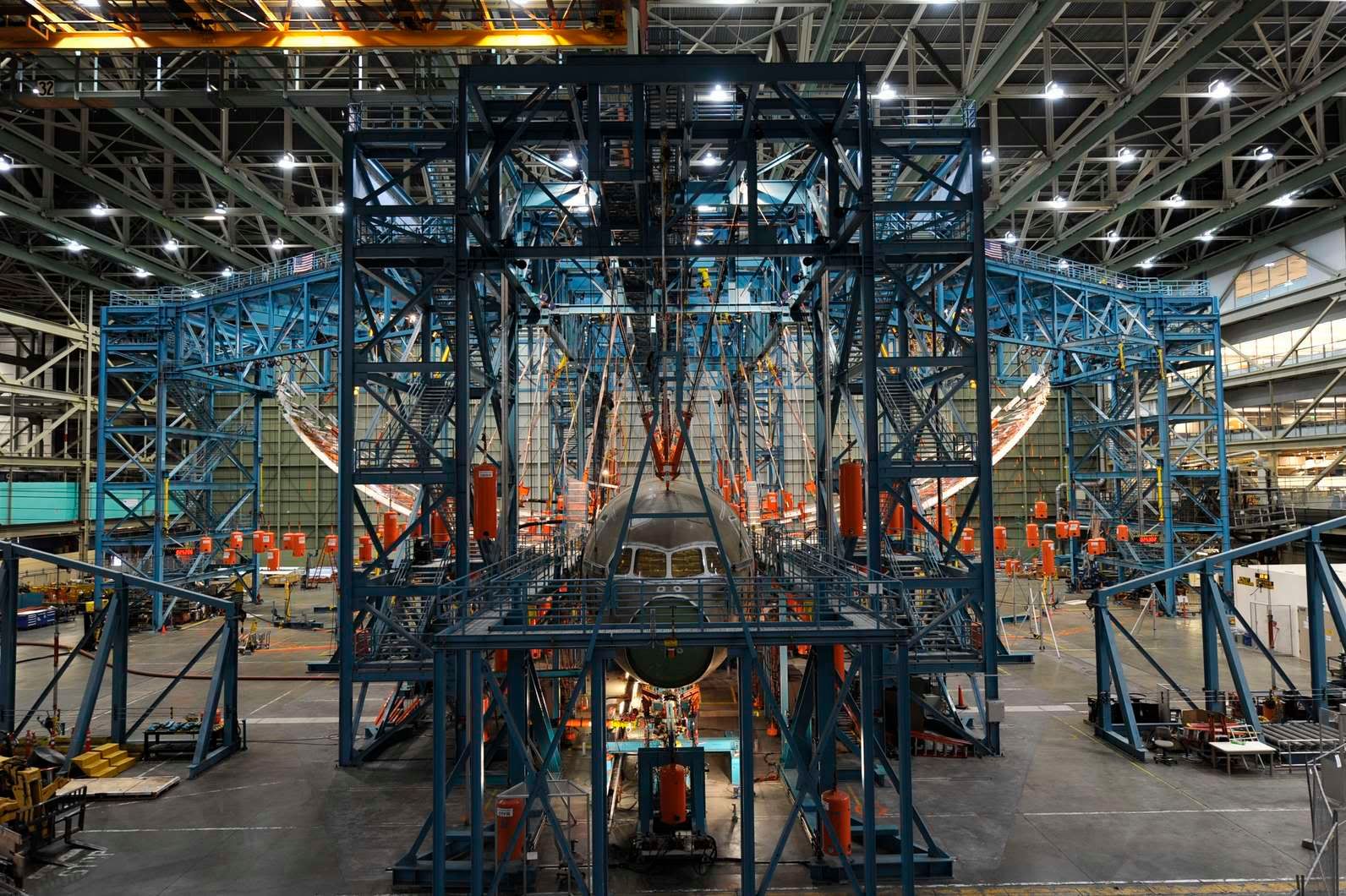lunes, 29 de marzo de 2010
La AIN presenta su tercer vehículo aéreo no tripulado
Condenados 23 trabajadores del Prat que invadieron las pistas en julio de 2006
La Audiencia Provincial de Barcelona ha condenado a dos años de prisión, la máxima pena para que no tengan que ir a la cárcel, a 23 de los 27 trabajadores de Iberia
Finalizados los ensayos a carga última del Ala del 787
Hoy Boeing finalizó la prueba de carga última del ala con flexión positiva del 787 Dreamliner en la unidad de pruebas estáticas. Durante los ensayos, se aplicaron cargas últimas, esto es 1.5 veces superiores a las máximas que se espera que el avión pueda ser sometido en servicio, o cargas límite. La flecha en la punta del ala alcanzó los 7,6 metros.
Los resultados iniciales de la prueba de carga máxima son positivos. Se requiere un análisis y estudio más completo antes de poder determinar el éxito definitivo de la prueba. "El programa de pruebas ha sido el más exhaustivo llevado a cabo en un reactor comercial de Boeing," aseveró Scott Fancher, Vicepresidente y Director General del programa 787, Boeing Commercial Airplanes. "El programa de pruebas estáticas ha precisado una cantidad inestimable de horas de duro trabajo por parte del equipo de Boeing y nuestros socios. Todos los que han participado en este esfuerzo a lo largo de los últimos años deben estar muy orgullosos de su contribución a la seguridad del 787 Dreamliner.
"Esperamos conocer el informe del equipo técnico con detalles de los resultados de las pruebas," explicó Fancher. Serán necesarias varias semanas para valorar todos los datos. Durante cada segundo de una prueba que supera las dos horas, se recogieron datos en miles de puntos para valorar el rendimiento del ala. Los puntos de datos clave se monitorizan en tiempo real durante la prueba, para evaluarlos después en conjunto durante las próximas semanas.
vía Boeing. En Boeing y Wired podéis encontrar la imagen al doble de la resolución que la que nosotros mostramos.
UK and A-400M
Lasers make carbon fiber fabrication quicker and easier
With the conventional method, completed carbon fiber parts are joined together using glue. With the Fraunhofer process, they're joined by using an infrared laser to melt their touching surfaces, then pressing them together until the melted resin resets. The result, we are told, is "an extraordinarily stable bond."
Before you start envisioning that carbon fiber dinnerware set, however, be advised that this is still all in the prototype phase.
Boeing Completes Ultimate-Load Wing Test on 787
Boeing (NYSE: BA) today completed the ultimate-load wing up-bending test on the 787 Dreamliner static test unit. During the testing, loads were applied to the airframe to replicate 150 percent of the most extreme forces the airplane is ever expected to experience while in service. The wings were flexed upward by approximately 25 feet (7.6 meters) during the test.
The initial results of the ultimate-load test are positive. More extensive analysis and review are required before the test can be deemed a success.
"The test program has been more robust than any conducted on a Boeing commercial jetliner," said Scott Fancher, vice president and general manager of the 787 program, Boeing Commercial Airplanes. "It has taken countless hours of hard work by the Boeing team and our partners to work through the static test program. Everyone who has been involved in this effort over the past several years should be very proud of their contributions to ensuring the safety of the 787 Dreamliner.
"We are looking forward to the technical team's report on the details of the test results," said Fancher. It will take them several weeks to work through all of the data.
During each second of the more than two-hour test, thousands of data points were collected to monitor the performance of the wing. Key data points are monitored real-time during the test, but all of the data will be evaluated in the weeks ahead.
Boeing press release


